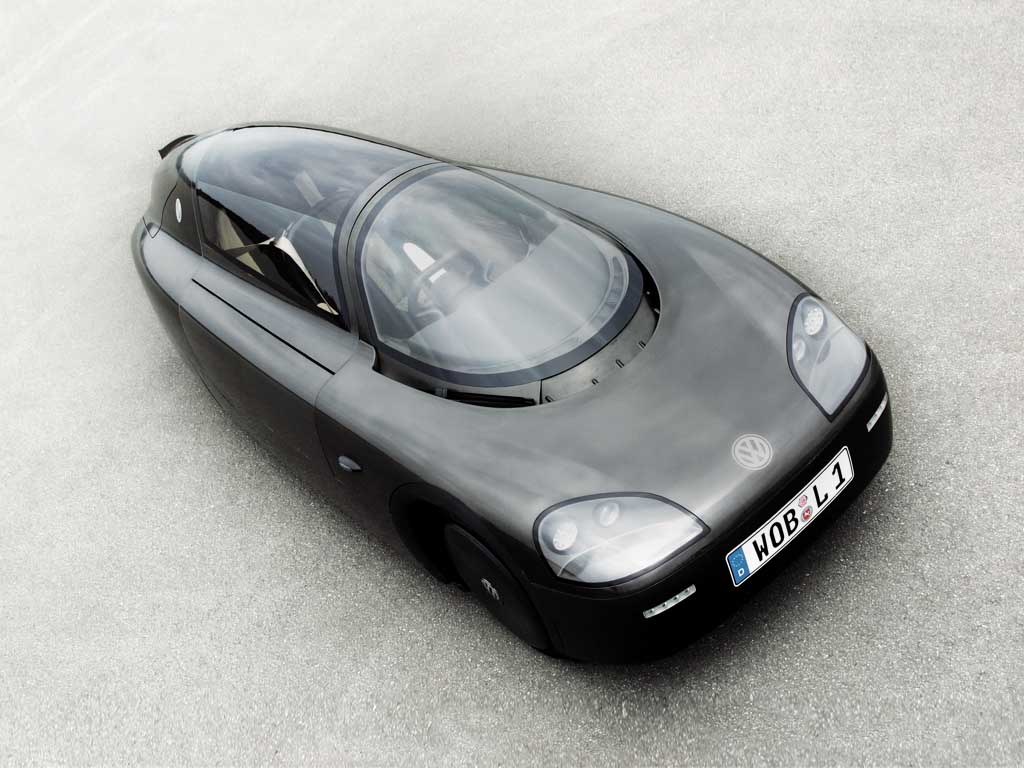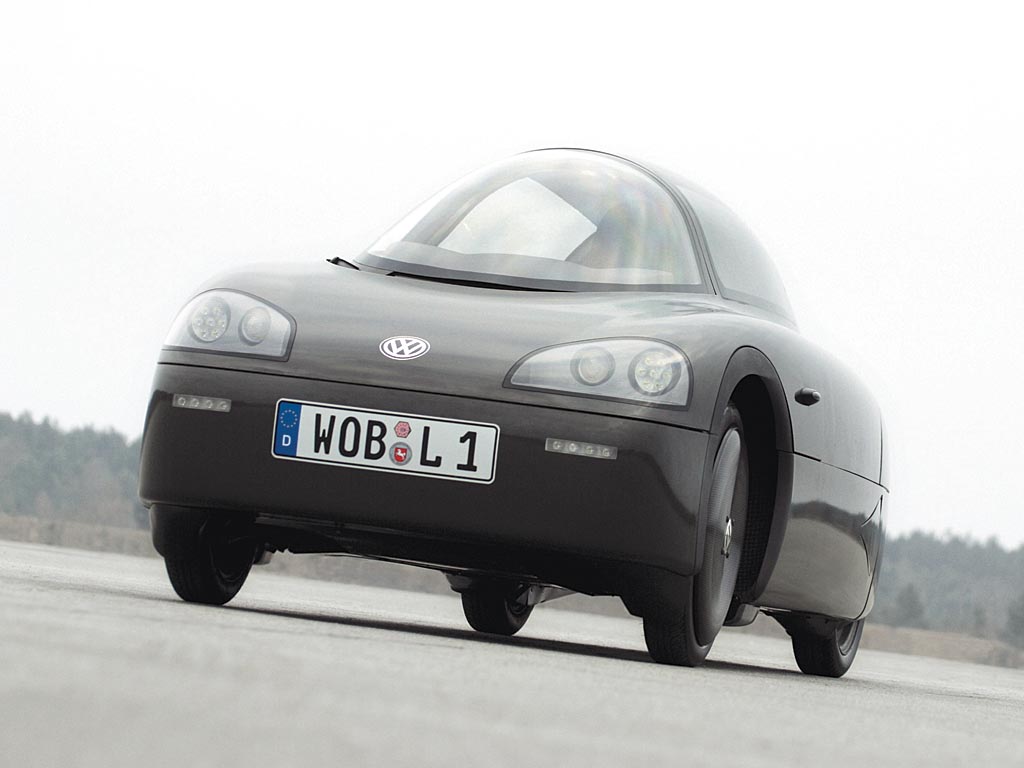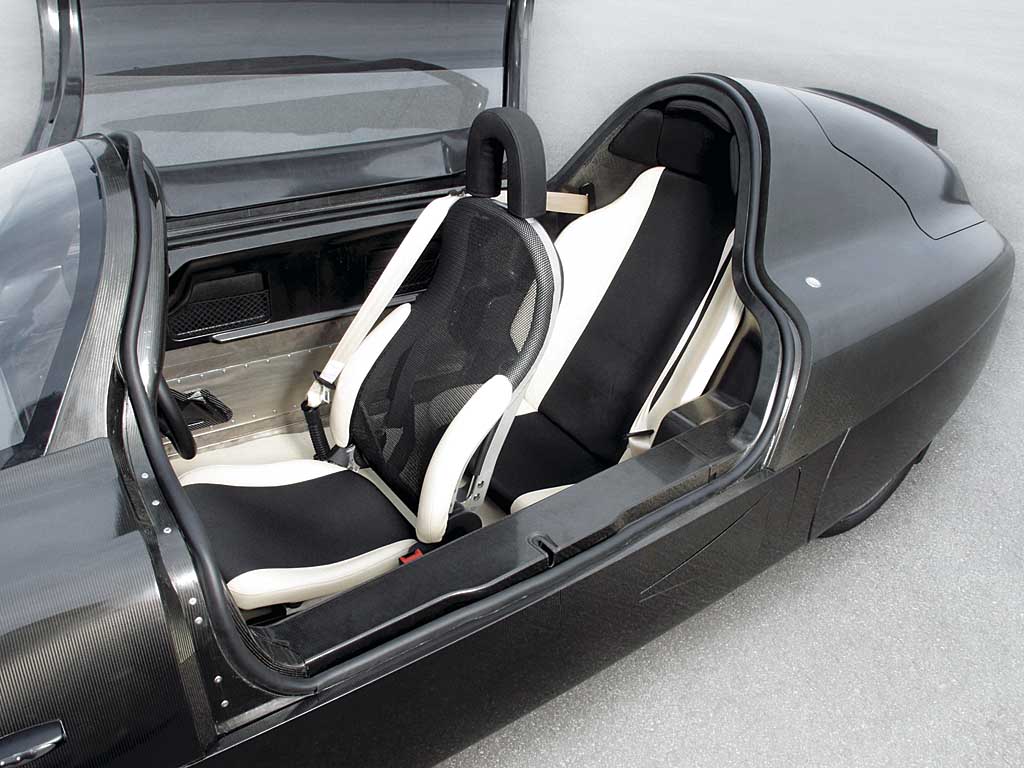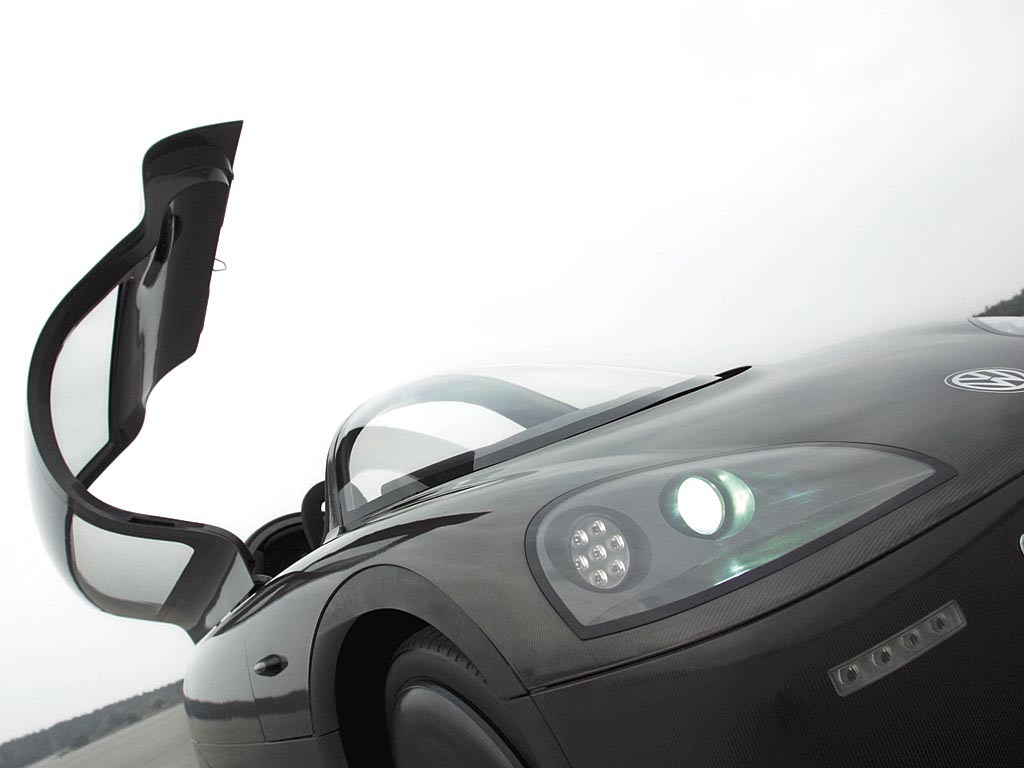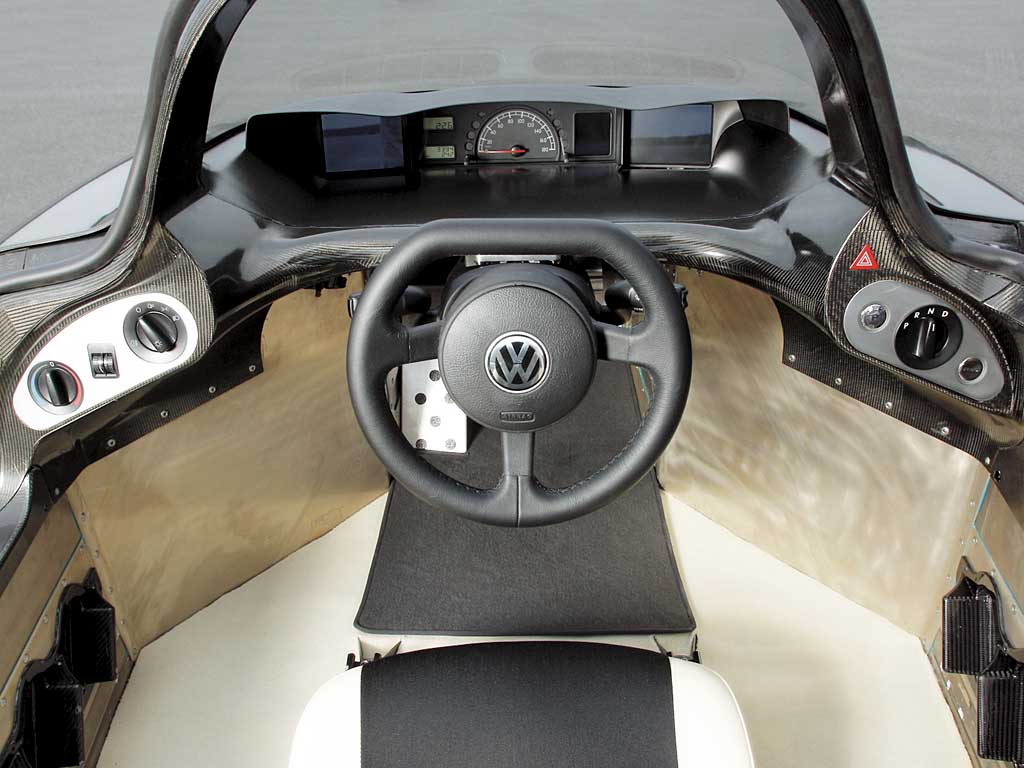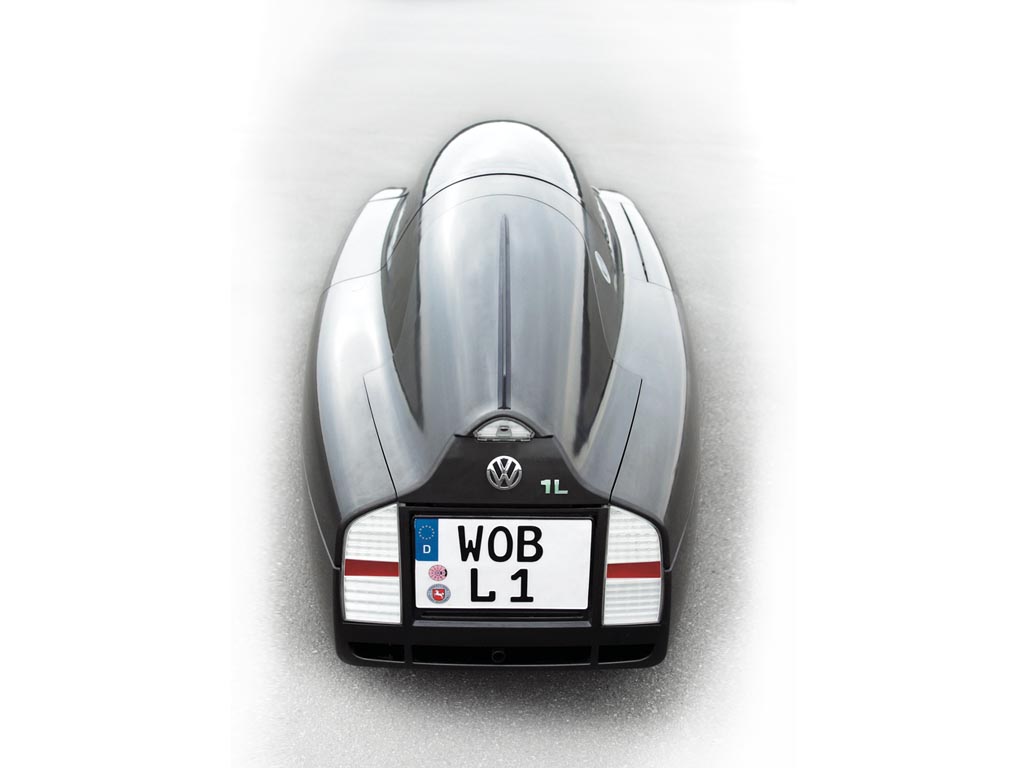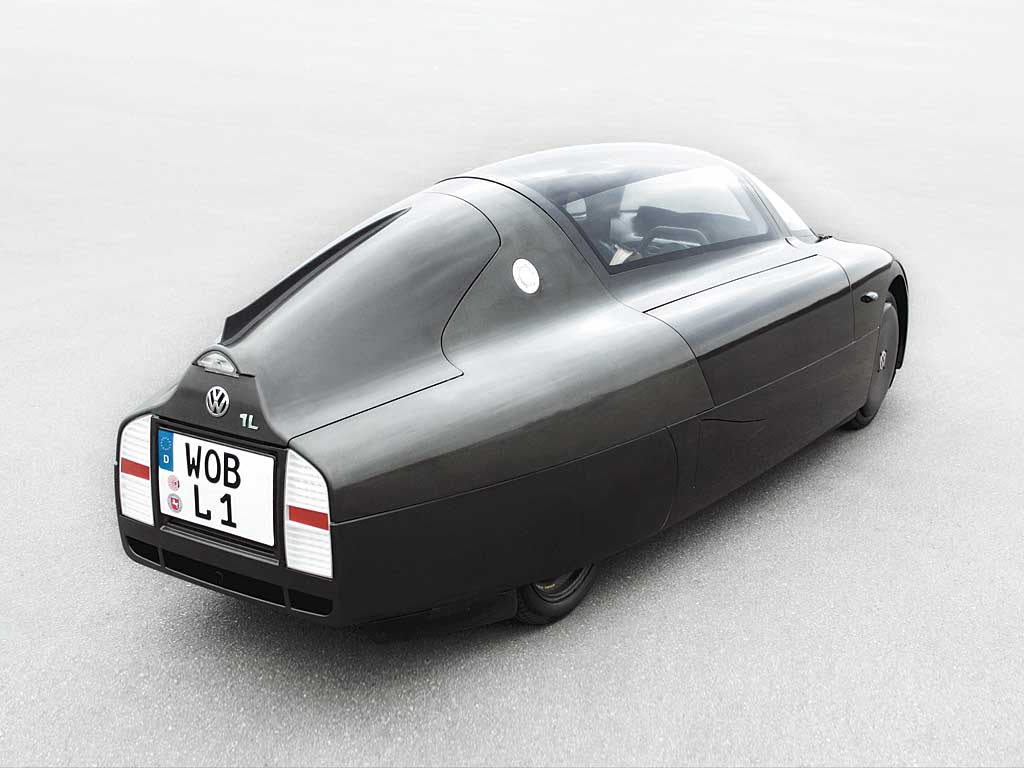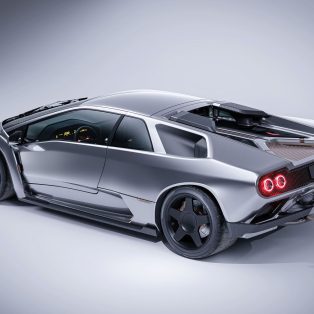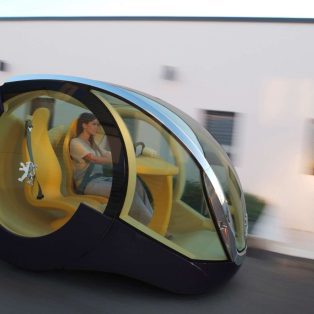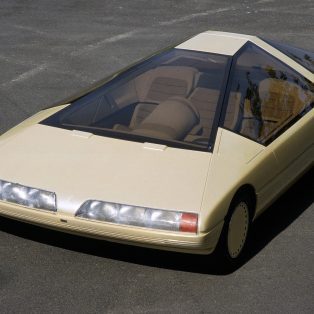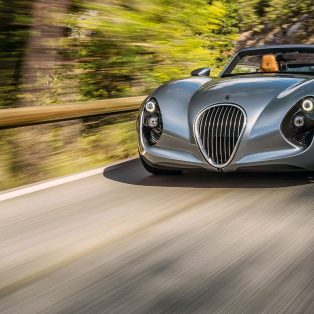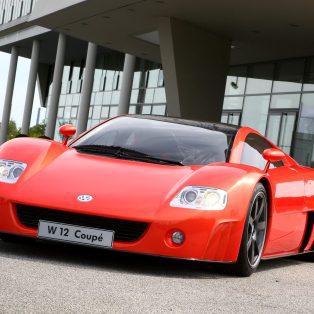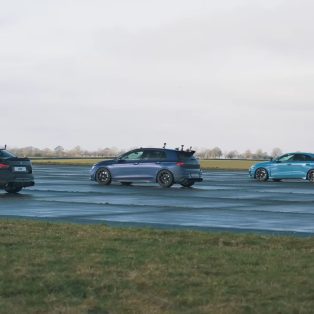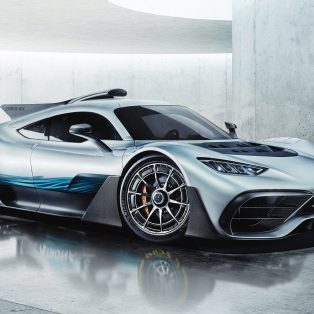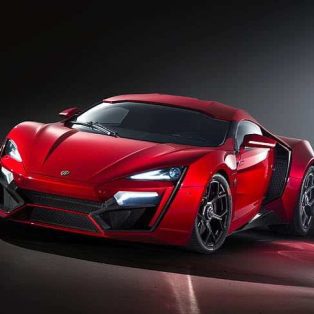2002 Volkswagen 1-Litre Concept
Just last week the world’s most economical car was realeased by Volkswagen AG. The car focuses on extreme lightweight construction, low fuel consumption and high safety standards. These ideas resulted in a prototpye which can reach speeds of 120 mph and consume under 1 litre of fuel per 100 kilometers.
The objective of developing a roadworthy vehicle that consumes just 1.0 litre of fuel per 100 kilometres could not be achieved through compromise. All existing technical solutions were examined, and in close cooperation with numerous suppliers, replaced by better, and principally lighter versions.
The conceptual necessity for a small frontal area led to an unusually narrow and very flat body form being chosen. The body was developed in a wind tunnel and is made completely of carbon fibre composites. To save weight, it is of course not painted. The carbon-fibre-reinforced outer skin is tensioned over a spaceframe that is not made of aluminium, but rather of magnesium.
The 1-litre car is powered by a one-cylinder diesel engine, centrally positioned in front of the rear axle and combined with an automated direct shift gearbox. The crankcase and cylinder head of the 0.3-litre engine are of an aluminium monobloc construction. The naturally aspirated, direct-injection diesel engine employs advanced high-pressure unit injection technology to generate 6.3 kW (8.5 bhp) at 4,000 rpm. This gives the vehicle, which weights just 290 kg, an astonishingly lively temperament.
The interior is sportingly simple in design, yet offers enough space for two people, who can comfortably get in after folding back the turret-like gullwing door. An extremely lightweight construction has also been employed for the seats. The seat frames are made of magnesium, and firm, yet comfortable fabric covers are used instead of a classic upholstery.
Despite the lightweight construction of all components, safety has been a major element in all phases of the development of the 1-litre car. For example, the concept vehicle’s safety equipment includes anti-lock brakes, ESP electronic stability program and a driver’s airbag. Deformation elements at the front end and the spaceframe construction provide impact and roll-over protection comparable to that of a GT racing car.
The concept of the 1-litre car – four wheels, low height, with two seats in tandem – gives an idea for a possible new family of vehicles, which could cover new requirements ranging from the ultra-economical vehicle, through to the low-lost everyday touring vehicle.
In Detail
| engine | 1 Cylinder Diesel |
| position | Front Transverse |
| aspiration | Natural |
| valvetrain | DOHC, 3 Valves per Cyl |
| displacement | 299 cc / 18.2 in³ |
| bore | 69 mm / 2.72 in |
| stroke | 80 mm / 3.15 in |
| compression | 16.5:1 |
| power | 6.3 kw / 8.5 bhp @ 4000 rpm |
| specific output | 28.43 bhp per litre |
| bhp/weight | 29.31 bhp per tonne |
| torque | 18.4 nm / 13.6 ft lbs |
| body / frame | Carbn Fibre over Magesium Chassis |
| driven wheels | RWD |
| front tires | 95/80 R 16 |
| rear tires | 115/70 R 16 |
| front brakes | Discs w/ABS |
| f brake size | mm / in |
| rear brakes | Discs w/ABS |
| r brake size | mm / in |
| f suspension | Double Wishbone |
| r suspension | De-Dion Type |
| curb weight | 290 kg / 639 lbs |
| wheelbase | 2205 mm / 86.8 in |
| front track | 1000 mm / 39.4 in |
| rear track | 810 mm / 31.9 in |
| length | 3646 mm / 143.5 in |
| width | 1248 mm / 49.1 in |
| height | 1110 mm / 43.7 in |
| gear ratios | :1 |
| top speed | ~120 kph / 74.6 mph |
Above Images ©IMAGE CREDITS – Volkswagen AG





